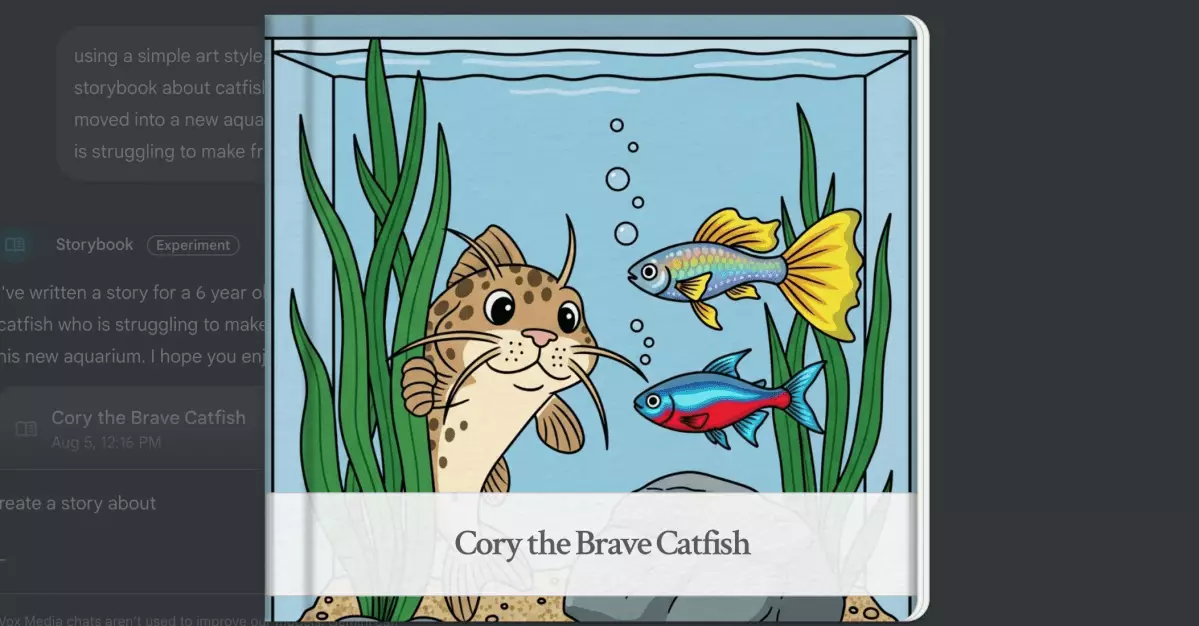In an era where artificial intelligence continues to permeate every aspect of daily life, Google’s latest venture into creative storytelling with its Gemini AI chatbot stands out as an ambitious leap forward. The new “Storybook” feature promises to revolutionize content creation by allowing users to craft personalized, illustrated narratives through simple descriptive prompts. It’s a compelling proposition: a tool that can seamlessly generate a 10-page story, complete with images and narration, tailored to any art style, from anime to claymation. On paper, this democratization of artistic creation is thrilling—imagine a parent crafting a bespoke bedtime story, a teacher designing engaging lesson materials, or an aspiring artist experimenting with visual storytelling.
However, beneath this gleaming veneer of innovation lies an imperfect reality. The very promise of AI-generated art and narrative, while tantalizing, exposes itself to significant limitations—some rooted in technical constraints, others in the inherent challenges of bridging human creativity with machine logic. The AI’s ability to mimic stylistic nuances, interpret complex prompts, and produce cohesive visual and textual narratives is impressive but frequently marred by noticeable inconsistencies and bizarre anomalies. These “hiccups,” as developers tend to dismiss them, reveal a fundamental truth: while AI storytelling tools can elevate creativity, they still grapple with understanding context, cultural nuances, and subtle artistic intent.
The Humbling Reality of AI Imperfections
My firsthand experience with Google’s Gemini “Storybook” offers a revealing glimpse into both its potential and its pitfalls. Asking the AI to craft a story about a lonely catfish in a new aquarium resulted in a narrative that felt surprisingly unremarkable—a rather uninspired plot about moving marbles and generic characters. While this does not seem inherently problematic at face value, the real concern emerges when the illustrations veer into the bizarre. One image depicted a human arm sprouting from a fish’s body—an unsettling, unintended surrealism that undermines the story’s coherence. Such errors aren’t merely trivial; they reflect the AI’s incomplete grasp of anatomy, physics, and artistic consistency.
Another amusing yet troubling instance was an AI-generated scene involving spaghetti sauce that resembled a dubious cartoon crime scene, and a family watching TV where the screen appeared on the wrong side. These visual anomalies, though seemingly minor, chip away at the credibility of the entire storytelling experience. They serve as stark reminders that the amalgamation of generated visuals and narrative still harbors a significant margin for error. In the pursuit of rapid, scalable content creation, AI’s occasional misfire may seem like a tolerable glitch—yet, for users expecting polished results, these flaws can be quite jarring.
Furthermore, the mismatch between user intent and AI output becomes especially evident when uploading custom images. I tried to input a cartoon cat I drew as inspiration, but Gemini failed to align with my vision, producing a story that felt disconnected from my initial artistic prompt. The AI’s interpretive capacity, though advanced, remains limited—it struggles with nuance, especially when translating personal sketches or specific art styles into cohesive narratives. This reveals a core weakness: AI storytelling tools are still in their infancy and cannot yet replace the nuanced judgment and creative intuition of human artists.
The Implications of Machine-Generated Art on Creativity
Despite these imperfections, dismissing Google’s Gemini Storybook as merely a rough prototype would be shortsighted. Instead, it should be viewed as a pioneering yet imperfect step toward a future where AI acts as an extension of human imagination rather than its replacement. The technology’s ability to generate diverse styles, reference uploaded images, and produce quick visual narratives underscores an exciting shift—one that could democratize access to artistic creation and inspire new forms of collaborative storytelling.
Yet, critical reflection demands acknowledgment of the current limitations. Is this technology truly ready to be integrated into educational, creative, and entertainment ecosystems without significant oversight? Or are we rushing into a realm where imperfect AI outputs could mislead, confuse, or even frustrate users seeking reliable artistic tools? The inconsistencies—whether bizarre character anomalies or incorrect scene layouts—highlight the necessity for ongoing refinement. As it stands, AI-powered storytelling still requires human oversight, a discerning eye to weed out peculiarities and ensure coherence.
From a broader perspective, reliance on such tools raises questions about authenticity and the essence of artistic expression. While AI can generate images and stories at lightning speed, can it truly capture the emotional depth and cultural subtleties that human creators bring to their work? The imperfections, paradoxically, serve as a reminder that art is inherently a reflection of human experience—something AI has yet to authentically emulate, no matter how impressive its technical feats become.
Google’s “Storybook” feature exemplifies both the exciting promise and persistent pitfalls of AI in creative media. It offers an intriguing glimpse into a future where machine-generated art could help bridge gaps in accessibility, inspiration, and innovation. But as critics and users alike navigate its quirks, one truth remains clear: the path to truly seamless AI storytelling is still under construction, with many more lessons to learn about the intricate dance between human ingenuity and technological advancement.

